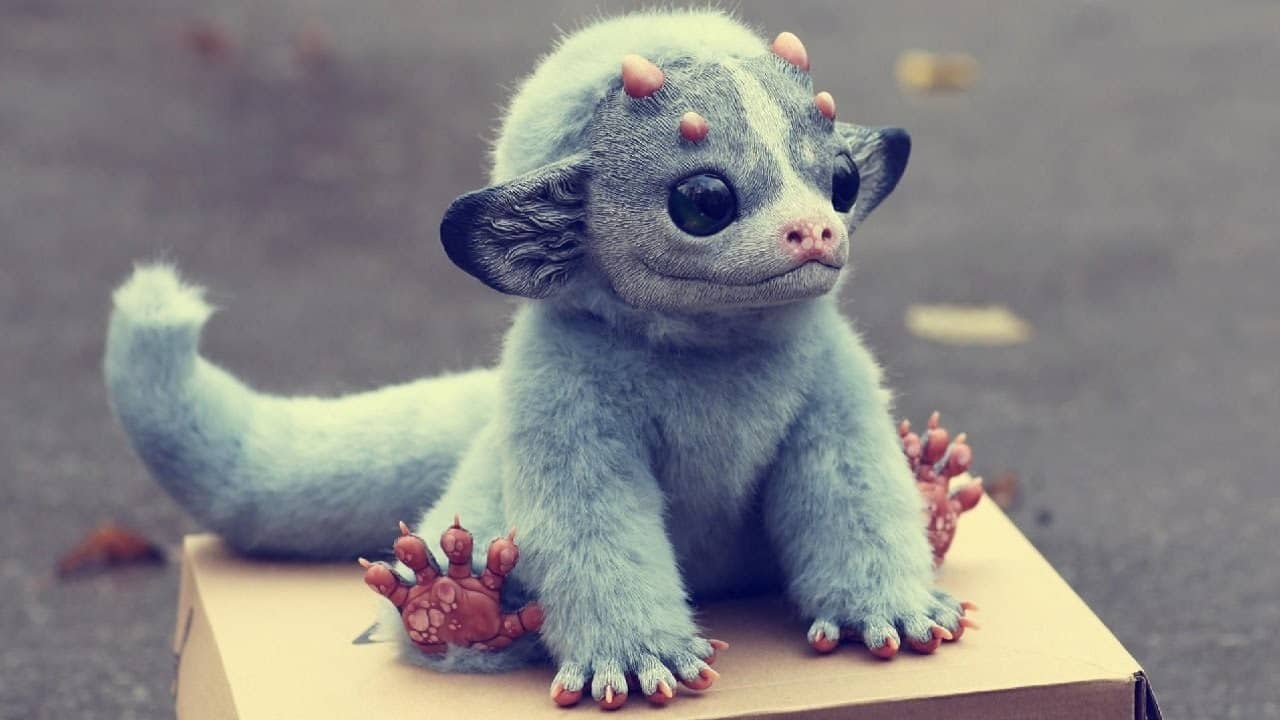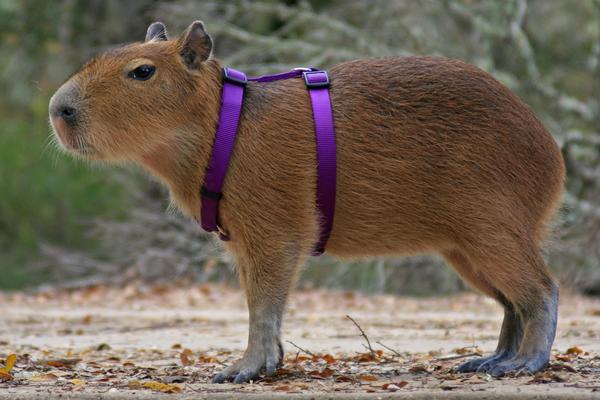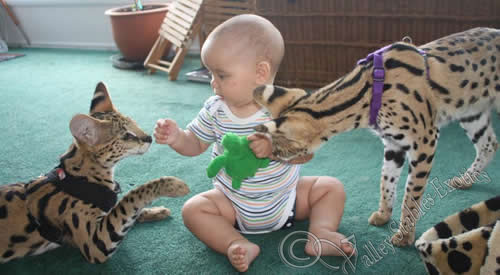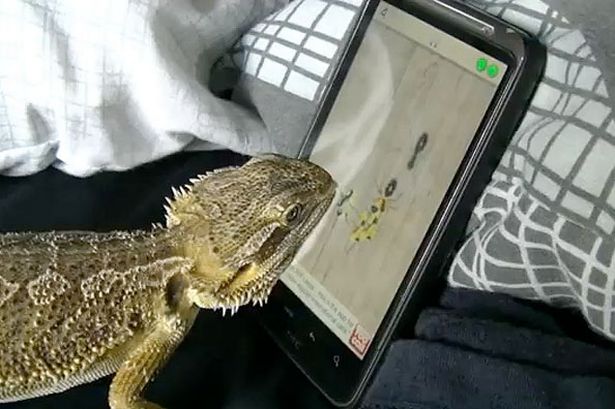If you are on a hunt for a new pet, check out the list below of some unconventional pets that can also bring some joy and companionship. While cat, dogs and other common pets are cute, the unusual and unique animals can also bring joy to your home.
Having an exotic pet is like having a small part of untamed nature in your home. However, before getting one of these think twice, as taking care of them can be a huge responsibility.
Before getting one of these, you should check if your state allows owning exotic pets.
Table of Contents
20. Fennec Foxes
This member of the canine family that has many similarities to dogs can make a great pet. The cute desert fennec fox usually grows up to a petite size, even smaller than cats.
They are clean animals and you can train it to use the litter box, though some owners claim that it’s not that easy.
Fennec foxes are active and quick. They are also very curious. If you let it out in the backyard, you might want to take some precautions first, so it won’t dig under or climb over the fence.
This unusual pet is friendly and poses no threat to the public, though on outings it should be leashed. They are very quick and if they run off, it can be difficult to recapture it.
19. Wallaby
A miniature version of the kangaroo, wallabies also make affectionate and playful house animals. They belong to a group of animals called macropod, which in Latin means “Big Foot”.
These native Australians can also make great pets, though they require proper raising and a wallabie-proofed home.
As they are small and when grown they are only about 2 ½ feet tall, they can be trained to live indoors. But after about a year they will need ample space of about 50 x 50 feet, so they can hop, run and hide when desired.
Wallabies are known to be very cuddly and can follow you around the house and if not properly trained can turn your bedroom into their sleeping headquarters as well.
18. Sugar Gliders
One more native to Australia, sugar glider, is known as a pocket pet. These tiny cute creatures from possum family are cuddly, playful and loyal.
You can teach them different tricks and they will bring your life and house plenty of joy.
The name they got because of the special membrane they have extending from the front leg to the hind leg, which allows them to easily glide from tree to tree.
Fully grown sugar gliders reach only around 7 inches in length and weigh about 3 ounces.
They can bond with people. But they are nocturnal and to get some bonding time you and not them will have to adjust the schedule.
17. Skunk
Skunks have been kept as pets for a long time but they’ve never been that popular. It might be related to their smelly reputation.
However, today, if you want to domesticate a skunk, when it’s about 4 weeks old you can remove the scent glands.
These animals are very sensitive, intelligent and curious. To tame them from young age, the owner needs to spend a lot of bonding time with the skunk.
The skunk will require annual visits to a vet. But keep in mind that not many veterinarians are experienced with skunks, so make sure that you find a local professional before you bring the animal into your household.
16. Pygmy Goat
Pygmy goats usually have a compact size and a friendly disposition, which makes it a pet growing in popularity.
They are the size of a small dog. Generally, they are not that high maintenance. However, they do require plenty of land for them to roam and a big shelter with sturdy structure as they can escape.
They like to socialize and they would be happier with other pygmies to befriend. For a balanced diet, pygmy goats will need grass hay and leaves.
15. Pot-Bellied Pigs
Some people are charmed by the intelligence and personality of pig pets. Given proper care and training, they make an interesting addition to the home.
Pot-bellied pigs grow to be the size of about a large dog, but with a heavier build.
They are relatively odor-free and can be trained. Some police departments have even used them as drug sniffers, because of their trainability.
They like a regimented schedule. Potbellies have a tendency to become obese, so they require plenty of exercise.
Potbellies are affectionate but like to be the center of attention, so it won’t make a good match with another potbellies.
14. Hedgehogs
Generally hedgehogs are gentle and require low maintenance. They are very miniature and weigh about 0.5-1.5 pounds.
To adjust to humans, they need to be handled from a young age.
They have a taste for things that creep and crawl, but you can also find special hedgehog mixes at pet stores.
They can be kept in cages similar to those for guinea pigs and rabbits. They are very active and without enough exercise can become depressed, so you’ll need to provide it with an exercise wheel.
13. Miniature Donkey
These pets make good domesticated animals because they are affectionate and good with children.
However, don’t be fooled by the name, they are not that tiny. When they reach maturity they are about 3 feet tall and weigh around 250-300 pounds.
The needs of miniature donkeys are similar to those of a standard donkey: water, hay and grain. They also require plenty of land to roam.
Miniature donkeys also don’t like solitude, so you’ll probably need to get another mini donkey for their companionship.
12. Capybara
Capybara came from South America and are related to the guinea pig. On average they are about 4 feet long and weigh around 100 pounds.
These obscure animals are rarely found as pets, though there are some domesticated capybaras.
The human-rodent relationship with this animal needs to be established from the capybara’s young age.
They can never fully be domesticated and require a lot of outdoor space to roam and a swimming pool as they are semi-aquatic creatures.
Capybaras are intensely social and can become anxious when separated from their human. They are not recommended for families with kids, as they can be territorial and can bite.
11. Stick Insects
For insect lovers, a good pet to consider is the stick insect. It’s one of the most popular insect pets.
These insects can live several years and are easy to care for. There’re different species available and for some taking care might be easier than for others.
Stick insects have the ability to camouflage and become almost undistinguishable from the plant braches when they are feeding on it.
Their unique appearance and molting process make them an interesting science project for any home, especially when there are kids.
10. Boa Constrictors
Snakes are usually not the perfect pets, but boa constrictors are generally friendlier than other snakes.
They are curious and active, and some of them you can tame. They are quite and can be quite engaging.
The problems with them is their large size. So before buying one, you’ll need to make sure that you have plenty of space to keep it.
9. Genets
Genet pets are growing in popularity due to their unique behaviors and beautiful patterns. They are native to the Middle East, Europe and Africa.
They are closely related to mongoose and civet, though their behaviors are closer to exotic cats and ferrets.
They are really beautiful. They look like a kitten but with a face of a ferret, the tail of a lemur and the spots of a cheetah. However, they are not cuddly and resist restraint.
They are nocturnal and prefer solitude. For better bonding with you, it will have to be the only pet in the house.
8. Degu
If handled from an early age, the degus can be tamed. They are very social, so it would be best to get another degu to keep it company.
Degus are playful and curious. However, without the necessary exercise and social interaction they can become aggressive.
Degus are avid chewers, so they will need to be provided with lots of opportunities for it. Wood blocks and braches are a good choice.
7. Hermit Crabs
Actually hermit crabs are not really a crab or a hermit. Unlike crabs, the hermit crab has a long, spirally coiled abdomen, which ends in an asymmetrically hooked tail.
They are quite sociable and like to be in groups of their own species. They are more active at nigh with their least active time at noon.
They have different species, but as pets you can have an Ecuadorian or a purple claw crab.
6. Piranhas
These fish are vicious and can chew off the hand that feeds it. So it’s a pet more suitable for experienced aquarists and not the faint hearted.
Piranhas are usually found in the waters of South America and Guyana.
They are dangerously aggressive, though an individual fish living not in schools is usually less aggressive. They eat only meat and prefer live prey.
5. Pacman Frogs
The frog was nicknamed after the computer game. It has a mean bite and can gobble anything that comes in its path, even its sibling, cage mate or the human handler.
The origin of this ornate horned frog is in South America. Though they do have a nasty temper, if they are provided with a good diet and their sleeping quarters are kept nicely clean, the maintenance of the frog is quite easy.
4. Kinkajous
Also called nightwalkers and honeybears. They are from the same family as raccoons and red pandas.
Usually they can have the length of about 16-25 inches and weigh about 8 pounds.
To tame them, they should be handled from an early age. They are nocturnal, active and curious.
They can be noisy at times and messy because litter training is not feasible. They need socialization and outdoor exercise, such as tree climbing.
3. Tarantulas
Tarantulas are gaining in popularity as pets due to their interesting and low-maintenance nature.
Many believe that they are dangerous. However, usually they will not bite unless provoked.
They are venomous and venom from the bite can cause an unpleasant reaction.
They are quite beautiful and some people are fascinated by them, while others find them terrifying.
2. Servals
These beautiful wild cats are not typical house cats as they are actually the most successful hunters among wild cats.
Servals are from Africa and their appearance resembles cheetahs.
They are nocturnal and usually more active during the night.
For feeding them whole prey will need to be provided and to make it more rewarding to the serval, feeding should be made as a game or puzzle.
This is not a cuddle cat and not for most people handling. It requires a large and secure outdoor enclosure, warm environment year-round and whole prey feeding.
1. Bearded Dragons
These natives to Australia are considered to be a good choice even for beginner reptile owners.
They are easy to handle and tame, but do have nutritional and environmental requirements.
Generally they don’t display any aggression in captivity unless threatened. Their fascinating behaviors are very interesting to watch, especially their endearing greetings that look like they are waving.






















